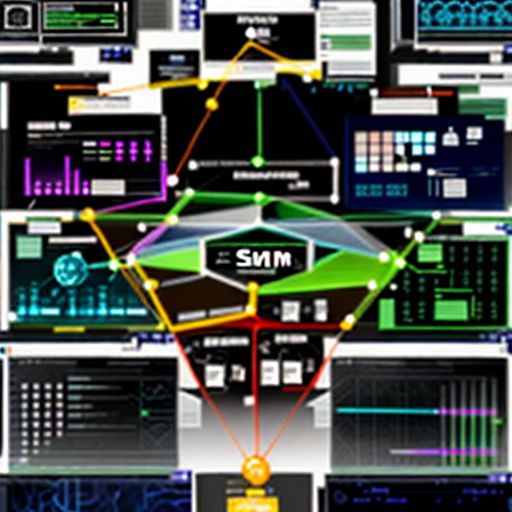In today’s digital landscape, where cyber threats lurk around every corner, safeguarding sensitive data is paramount for businesses of all sizes. As cyberattacks become more sophisticated, traditional security measures often fall short. This is where Security Information and Event Management (SIEM) steps in as a powerful line of defense.
Imagine having a centralized command center that provides real-time visibility into your entire IT infrastructure, instantly alerting you to potential security breaches and empowering you to respond swiftly and effectively. That’s the essence of SIEM.
What is Security Information and Event Management (SIEM)?
SIEM, at its core, is a type of security software that provides a holistic view of an organization’s security posture. It accomplishes this by:
- Collecting: SIEM solutions aggregate vast amounts of security data from various sources across your network, including servers, firewalls, antivirus software, and intrusion detection systems.
- Correlating: Raw data is meaningless without context. SIEM analyzes and correlates this data, connecting the dots between seemingly isolated events to identify patterns and anomalies that may indicate a security incident.
- Analyzing: Through predefined rules and advanced analytics, SIEM systems identify and prioritize real threats from harmless activities.
- Alerting: When a potential security threat is detected, SIEM tools generate alerts, notifying security teams in real-time so they can take immediate action.
- Reporting: SIEM provides comprehensive reports and dashboards, offering valuable insights into security trends, vulnerabilities, and the overall effectiveness of your security measures.
security.yougaming.xyz/wp-content/uploads/2024/07/SIEM-system-669230.jpg" alt="SIEM System Architecture" width="512" height="512">SIEM System Architecture
Why is SIEM Important?
The importance of SIEM in today’s threat landscape cannot be overstated. Here’s why:
- Proactive Threat Detection: SIEM shifts security from a reactive to a proactive approach, enabling organizations to identify and mitigate threats before they can cause significant damage.
- Improved Incident Response: By providing real-time visibility and actionable insights, SIEM empowers security teams to respond to incidents rapidly and efficiently, minimizing the impact of a breach.
- Enhanced Compliance: SIEM helps organizations meet regulatory compliance requirements by providing audit trails, log management, and reporting capabilities.
- Reduced Security Costs: By streamlining security operations and automating threat detection, SIEM can help organizations optimize their security investments and reduce overall costs associated with breaches.
Common Questions About SIEM
As you delve deeper into the world of SIEM, you might encounter these frequently asked questions:
1. What is the difference between SIEM and SOAR?
While both are critical for cybersecurity, SIEM focuses on threat detection and reporting, while Security Orchestration, Automation and Response (SOAR) focuses on automating incident response.
2. What are some popular SIEM tools available?
Leading SIEM solutions include Splunk Enterprise Security, IBM QRadar, and LogRhythm, each offering unique features and capabilities.
3. What are the challenges of implementing a SIEM solution?
Implementing and managing a SIEM solution can be complex, requiring specialized skills, careful planning, and ongoing tuning and maintenance.
Conclusion
In an increasingly interconnected world, where cyber threats continue to evolve at an alarming rate, Security Information and Event Management (SIEM) is no longer a luxury but a necessity for organizations serious about protecting their valuable assets. By providing a centralized, intelligent platform for threat detection, analysis, and response, SIEM empowers businesses to stay one step ahead of cybercriminals and safeguard their future.
